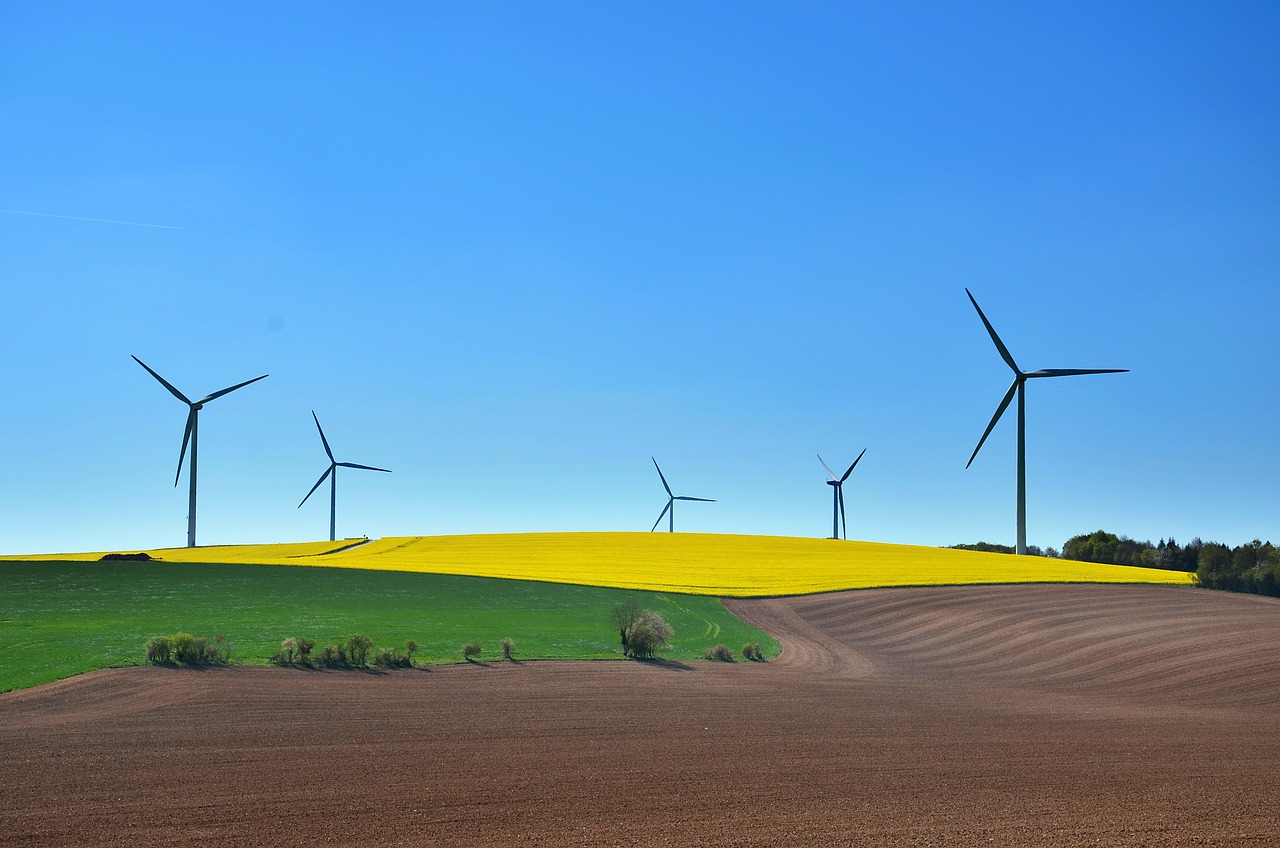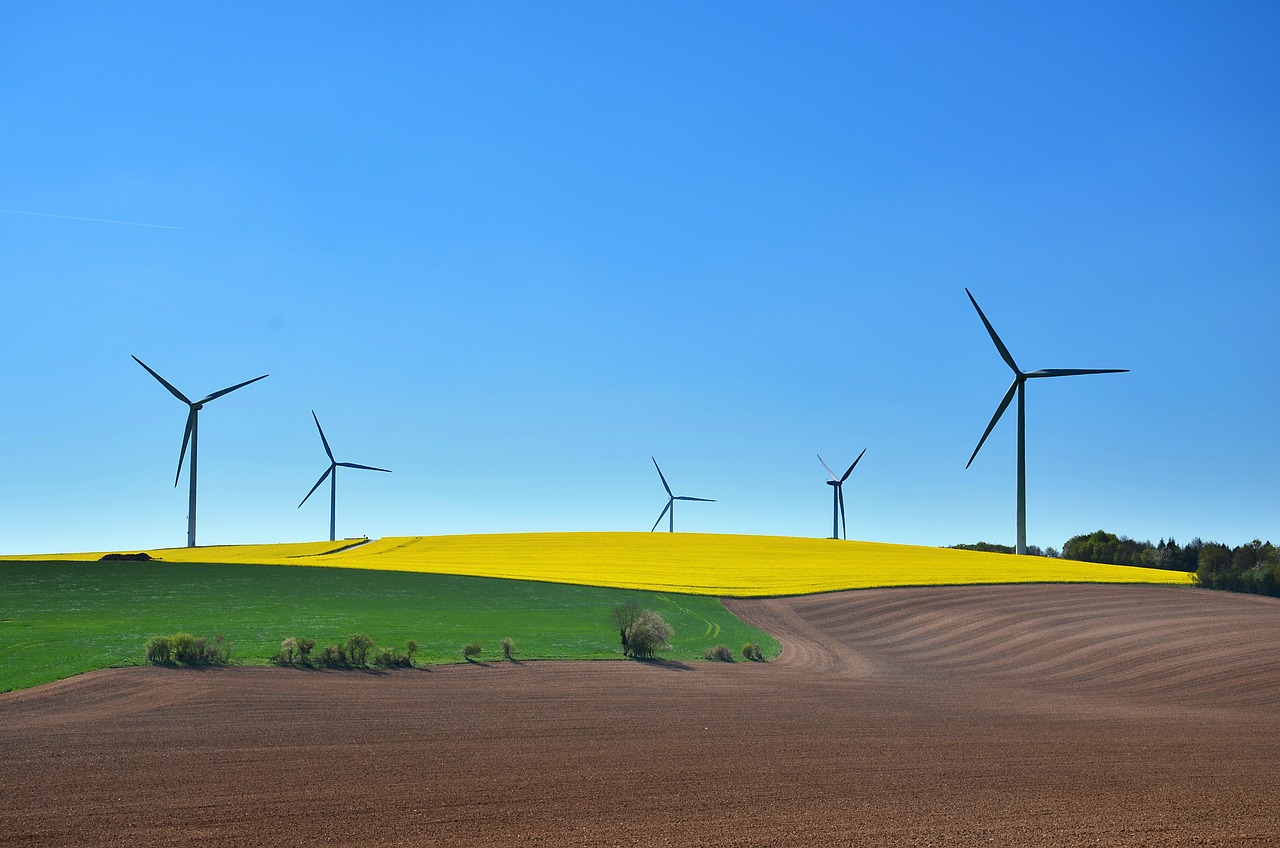Sustainable Fashion – A New Trend?
In recent years, the fashion industry has been undergoing a significant transformation, with a growing emphasis on sustainability. This shift is not merely a trend; it represents a fundamental change in how we perceive and engage with fashion. As consumers become more aware of the environmental and social impacts of their clothing choices, brands are feeling the pressure to adapt. But what exactly does sustainable fashion entail, and why is it becoming such a hot topic?
Sustainable fashion refers to clothing, accessories, and footwear that are produced and consumed in a manner that is environmentally friendly and socially responsible. It encompasses a wide range of practices, from using organic materials to ensuring fair labor conditions. It's like a breath of fresh air in an industry that has long been associated with overconsumption and waste. Imagine a world where your favorite outfits don’t just look good but also do good for the planet. That's the essence of sustainable fashion!
But why should we care? The fashion industry is one of the largest polluters globally, contributing to issues such as water pollution, greenhouse gas emissions, and waste accumulation. As we continue to churn out fast fashion at an alarming rate, the consequences are dire. Think about it: every year, millions of tons of clothing end up in landfills, while countless workers are subjected to poor working conditions. Sustainable fashion challenges this narrative, urging us to consider the impact of our choices.
So, how are brands and consumers responding to this call for change? Many fashion labels are now embracing sustainable practices, from sourcing materials responsibly to implementing ethical production methods. On the consumer side, there is a noticeable shift towards conscious consumerism, where shoppers prioritize sustainability and ethical considerations in their purchasing decisions. It’s like a ripple effect—when one person chooses to buy sustainably, it encourages others to do the same, creating a wave of change that can reshape the industry.
As we delve deeper into the principles of sustainable fashion, it becomes clear that this movement is about more than just clothes; it's about creating a better future for our planet and its inhabitants. The question is not whether sustainable fashion is a trend, but rather how quickly we can embrace it and make it the norm. Are you ready to join the movement?
- What is sustainable fashion? Sustainable fashion refers to clothing that is designed, manufactured, and consumed in a way that is environmentally friendly and socially responsible.
- Why is sustainable fashion important? It helps reduce the negative impacts of the fashion industry on the environment and promotes fair labor practices.
- How can consumers support sustainable fashion? By choosing brands that prioritize sustainability, reducing consumption, and opting for second-hand or upcycled clothing.
- What materials are commonly used in sustainable fashion? Eco-friendly materials include organic cotton, recycled fibers, and innovative textiles that minimize environmental impact.

The Importance of Sustainable Fashion
Understanding why sustainable fashion matters is crucial in today's world. The fashion industry has a significant impact on our planet and society, and it’s not just about looking good anymore. It’s about making choices that are good for the environment and for the people involved in the production process. Did you know that the fashion industry is one of the largest polluters globally? From water pollution to greenhouse gas emissions, the effects are staggering. This is where sustainable fashion comes into play, aiming to reduce these negative impacts and promote a healthier planet.
One of the major issues with conventional fashion is the sheer volume of waste it generates. According to recent statistics, around 92 million tons of textile waste is produced each year. That’s enough to fill the Sydney Harbour every year! This waste not only fills landfills but also contributes to pollution when garments are incinerated. Sustainable fashion seeks to address this problem by promoting practices such as recycling, upcycling, and reducing overproduction. By adopting these methods, we can significantly lessen our environmental footprint.
Moreover, the social implications of the fashion industry cannot be ignored. Many workers in developing countries face unfair wages and unsafe working conditions. Sustainable fashion emphasizes the importance of ethical labor practices, ensuring that workers receive fair compensation and work in safe environments. This shift not only improves the lives of those who create our clothes but also fosters a sense of responsibility among consumers. When we buy sustainable fashion, we are making a conscious choice to support brands that prioritize people and the planet.
In essence, sustainable fashion is not just a trend; it’s a necessary evolution in the industry. As consumers become more aware of the consequences of their purchases, they are demanding transparency and accountability from brands. This shift in consumer behavior is driving change, pushing brands to adopt more sustainable practices. It’s a win-win situation: we get to enjoy stylish clothing while also contributing to a better world. So, the next time you shop, consider the impact of your choices. Are you part of the solution or the problem?
As we move forward, the importance of sustainable fashion will only continue to grow. By embracing eco-friendly materials, ethical production practices, and mindful consumption, we can pave the way for a more sustainable future. Together, we can transform the fashion landscape into one that respects both the environment and the people who make our clothes.

Key Principles of Sustainable Fashion
Sustainable fashion is not just a fleeting trend; it embodies a profound shift in how we perceive clothing and its impact on our planet. At its core, sustainable fashion revolves around a few key principles that aim to create a more responsible and ethical industry. These principles include ethical production, eco-friendly materials, and fair labor practices. Each of these pillars plays a vital role in redefining the relationship between consumers, brands, and the environment.
Let’s dive deeper into these principles. First up is ethical production. This principle emphasizes the importance of creating clothing in a way that respects both the environment and the people involved in the production process. Ethical production practices ensure that workers are paid fair wages and work in safe conditions. This is crucial because, historically, the fashion industry has been notorious for exploiting labor, particularly in developing countries. By promoting transparency in the supply chain, brands can foster trust and accountability, allowing consumers to make informed choices about their purchases.
Next, we have eco-friendly materials. The materials used in clothing production significantly impact the environment. Traditional fabrics like polyester and conventional cotton often require harmful chemicals and excessive water for their production. In contrast, sustainable fashion advocates for the use of materials that minimize environmental damage. For instance, organic cotton is grown without synthetic pesticides and fertilizers, making it a much healthier option for both the planet and the farmers. Other eco-friendly materials include:
- Recycled fibers: These are made from post-consumer waste, such as plastic bottles, reducing landfill waste and conserving resources.
- Bamboo: This fast-growing plant requires minimal water and no pesticides, making it an excellent sustainable choice.
- Hemp: Known for its durability, hemp grows quickly and requires little water, making it an eco-friendly alternative.
Furthermore, the principle of fair labor practices cannot be overstated. This principle not only advocates for fair wages but also addresses working conditions, ensuring that employees are treated with dignity and respect. Brands committed to sustainable fashion often go above and beyond to implement fair labor practices, conducting audits and collaborating with organizations that promote workers' rights. The goal is to create a fashion ecosystem where everyone, from the cotton farmer to the factory worker, benefits from ethical practices.
In summary, the key principles of sustainable fashion—ethical production, eco-friendly materials, and fair labor practices—are interconnected and essential for creating a more sustainable future in the fashion industry. By understanding and embracing these principles, both consumers and brands can contribute to a healthier planet and a more equitable society. As we move forward, it's crucial to keep these principles at the forefront of our choices, ensuring that our love for fashion does not come at the expense of our world.
Q1: What is sustainable fashion?
A1: Sustainable fashion refers to clothing that is produced in an environmentally friendly and ethically responsible manner, focusing on reducing waste, using eco-friendly materials, and ensuring fair labor practices.
Q2: Why is sustainable fashion important?
A2: Sustainable fashion is crucial because the traditional fashion industry has significant environmental and social impacts, including pollution, waste, and exploitation of labor. Embracing sustainability helps mitigate these issues.
Q3: How can consumers support sustainable fashion?
A3: Consumers can support sustainable fashion by choosing brands that prioritize ethical production, buying second-hand clothing, and being mindful of their purchasing decisions to reduce waste.

Eco-Friendly Materials
When it comes to sustainable fashion, one of the most exciting aspects is the use of . These materials not only reduce the environmental impact of clothing production but also promote a healthier planet. Imagine wearing a shirt made from fabrics that not only feel good but also do good! This shift towards sustainable textiles is like planting a seed for a greener future, and it's gaining momentum in the fashion industry.
So, what exactly are these eco-friendly materials? They can range from organic cotton to recycled fibers, and even innovative textiles derived from natural resources. Each of these materials plays a crucial role in minimizing waste and conserving resources. For instance, organic cotton is grown without harmful pesticides or fertilizers, which not only benefits the soil but also protects the health of farmers and consumers alike. It's like choosing to eat organic food—you're making a conscious decision for your health and the environment.
Let’s dive deeper into some popular eco-friendly materials:
- Organic Cotton: Grown using sustainable farming practices, organic cotton uses non-GMO seeds and avoids toxic chemicals. This makes it a safer option for both the environment and our skin.
- Recycled Fibers: These are created from post-consumer waste, such as plastic bottles and old garments. By recycling these materials, we reduce waste in landfills and conserve resources needed to produce new fabrics.
- Bamboo: Known for its rapid growth and minimal water requirements, bamboo fabric is biodegradable and has natural antibacterial properties, making it a fantastic choice for clothing.
- Hemp: Another sustainable option, hemp grows quickly and requires little water and no pesticides. It's durable and can be used for a variety of clothing types.
Now, let’s compare organic cotton and conventional cotton to highlight the differences:
| Feature | Organic Cotton | Conventional Cotton |
|---|---|---|
| Pesticide Use | None | High |
| Water Consumption | Less | More |
| Soil Health | Improves | Decreases |
| Health Impact | Safer for Farmers | Potentially Harmful |
As you can see from the table, the benefits of organic cotton are substantial. It not only promotes a healthier environment but also supports the well-being of farmers and consumers. The shift towards eco-friendly materials is a vital step in the journey towards sustainable fashion, and it's exciting to see more brands embracing this change.
In conclusion, the move towards eco-friendly materials in fashion is more than just a trend; it's a necessary evolution. As consumers become more aware of their impact on the planet, the demand for sustainable options continues to grow. So, the next time you're shopping for clothes, consider choosing items made from these innovative materials. You'll not only look good but also feel good about your choices!

Organic Cotton vs. Conventional Cotton
When it comes to the fabric that wraps us in comfort, the debate between organic cotton and conventional cotton is more than just a matter of preference; it's a crucial conversation about our planet's health and our own well-being. So, what’s the real difference? For starters, organic cotton is grown without the use of synthetic pesticides, herbicides, or fertilizers. Instead, it relies on natural farming methods that promote biodiversity and protect the ecosystem. This means that not only are organic farmers committed to sustainable practices, but they also contribute to healthier soil, cleaner water, and reduced pollution. In contrast, conventional cotton farming often involves the heavy use of chemicals that can harm both the environment and the farmers who work the land.
In terms of health, organic cotton is a winner. Since it’s free from harmful chemicals, it’s a safer choice for sensitive skin, especially for babies and those with allergies. Imagine wrapping your little one in a blanket made from cotton that’s as gentle on their skin as it is on the earth. On the other hand, conventional cotton can contain residues from pesticides and other chemicals that may linger even after the fabric is processed.
Let’s break it down further with a quick comparison:
| Feature | Organic Cotton | Conventional Cotton |
|---|---|---|
| Farming Practices | Natural methods, no synthetic chemicals | Uses pesticides and fertilizers |
| Environmental Impact | Promotes biodiversity, healthier ecosystems | Can lead to soil degradation and water pollution |
| Health Safety | Safer for sensitive skin | Potential chemical residues |
| Water Usage | More efficient due to sustainable practices | High water consumption, especially in irrigation |
Another key point to consider is water usage. Organic cotton farming often utilizes more sustainable irrigation methods, which can significantly reduce water consumption compared to conventional farming. This is essential as we face global water scarcity issues. By choosing organic cotton, consumers are not just making a fashion statement; they are also taking a stand for sustainable water practices.
Ultimately, the choice between organic and conventional cotton extends beyond just fabric. It’s about supporting a movement toward a more sustainable future. By opting for organic cotton, you're not only investing in a healthier lifestyle but also contributing to a healthier planet. So the next time you’re shopping for clothes, remember that your choice can make a difference. Choose wisely, and let your wardrobe reflect your values!
- What are the benefits of organic cotton? Organic cotton is grown without harmful chemicals, making it safer for the environment and for your skin.
- Is organic cotton more expensive? While it may have a higher price point, the long-term benefits for health and sustainability often outweigh the cost.
- Can I find organic cotton products easily? Yes, many brands are now offering a range of organic cotton options, from clothing to home textiles.
- How can I tell if a product is made from organic cotton? Look for certifications such as GOTS (Global Organic Textile Standard) on the label.

Recycled Fabrics
Recycled fabrics are a game-changer in the world of sustainable fashion, breathing new life into materials that would otherwise contribute to the ever-growing waste problem. Imagine a world where discarded plastic bottles and old textiles are transformed into stylish garments—this is not just a dream but a reality that many brands are embracing today. By utilizing recycled materials, the fashion industry can significantly reduce its environmental footprint while creating innovative products that appeal to eco-conscious consumers.
The process of producing recycled fabrics typically begins with the collection of post-consumer waste, such as plastic bottles, used clothing, or textile scraps. These materials are then sorted, cleaned, and processed to create new fibers. For instance, plastic bottles can be converted into polyester fibers, which are commonly used in activewear and outerwear. This not only diverts waste from landfills but also conserves resources by reducing the need for virgin materials.
One of the most fascinating aspects of recycled fabrics is their versatility. From recycled polyester to recycled cotton, the options are plentiful. Brands are increasingly experimenting with blends of recycled materials to enhance the quality and performance of their products. For example, recycled nylon, derived from discarded fishing nets and fabric scraps, is gaining popularity for its durability and strength. These innovations not only contribute to sustainability but also challenge the perception that eco-friendly products must compromise on quality.
However, the journey of recycled fabrics doesn't end with production. Consumers play a vital role in this circular economy. By choosing products made from recycled materials, shoppers can help drive demand for sustainable practices. It's a win-win situation—consumers get fashionable, high-quality clothing while contributing to a healthier planet.
To further illustrate the impact of recycled fabrics, consider the following table that highlights the differences between traditional and recycled materials:
| Aspect | Traditional Materials | Recycled Materials |
|---|---|---|
| Source | Virgin resources (e.g., cotton, petroleum) | Post-consumer waste (e.g., plastic bottles, old textiles) |
| Environmental Impact | High; contributes to pollution and resource depletion | Lower; reduces waste and conserves resources |
| Production Process | Conventional manufacturing methods | Reprocessing and transforming waste into new fibers |
| Consumer Perception | Often seen as less sustainable | Increasingly recognized for sustainability and innovation |
In conclusion, recycled fabrics represent a significant shift towards a more sustainable fashion industry. They not only help mitigate the environmental impacts of clothing production but also inspire consumers to make more conscious choices. As the demand for recycled materials continues to grow, we can expect to see even more innovative solutions that redefine what it means to be fashionable in an eco-friendly way.
- What are recycled fabrics made from? Recycled fabrics are created from post-consumer waste, such as plastic bottles, old clothing, and textile scraps.
- Are recycled fabrics of good quality? Yes, recycled fabrics can be of high quality and are often blended with other materials to enhance their durability and performance.
- How can I identify clothing made from recycled materials? Look for labels that specify the use of recycled materials, such as recycled polyester or recycled cotton.
- Why is using recycled fabrics important? Using recycled fabrics helps reduce waste, conserve resources, and lower the environmental impact of the fashion industry.

Ethical Production Practices
In the quest for sustainable fashion, play a pivotal role in reshaping the industry. It's not just about making clothes; it’s about how those clothes are made. Ethical production focuses on ensuring that every piece of clothing is created under conditions that respect both people and the planet. This encompasses fair wages, safe working conditions, and a commitment to transparency throughout the supply chain. Imagine a world where every garment you wear tells a story of respect and care, rather than exploitation and harm. That’s the vision behind ethical production.
One of the most pressing issues in the fashion industry is the treatment of workers. Many brands have been criticized for their sweatshop conditions, where employees work long hours for meager pay in unsafe environments. Ethical production seeks to change this narrative by advocating for fair wages that allow workers to support their families and communities. Brands that prioritize ethical practices often conduct regular audits and maintain open lines of communication with their workers, ensuring that their rights are upheld. This not only fosters a sense of trust but also enhances the overall quality of the products being made.
Moreover, ethical production emphasizes the importance of safe working conditions. Workers should be able to perform their jobs without the fear of injury or health hazards. This involves providing adequate safety equipment, proper training, and a clean working environment. Imagine walking into a workshop where the air is fresh, the machines are well-maintained, and the workers are smiling. This is the kind of environment that ethical production strives to create. It’s about more than just compliance; it’s about fostering a culture of care and respect.
Transparency is another cornerstone of ethical production. Consumers today are more informed than ever, and they demand to know where their clothes come from and how they were made. Brands that embrace transparency often share detailed information about their supply chains, including sourcing practices, labor conditions, and environmental impact. This openness builds trust and allows consumers to make informed choices. When you know the story behind your clothing, it transforms your shopping experience. You’re not just buying a product; you’re supporting a movement.
To illustrate the impact of ethical production, consider the following table that highlights the differences between traditional and ethical practices in the fashion industry:
| Aspect | Traditional Production | Ethical Production |
|---|---|---|
| Worker Treatment | Often exploitative | Fair wages and safe conditions |
| Environmental Impact | High pollution and waste | Focus on sustainability |
| Transparency | Limited information | Open supply chains |
| Consumer Engagement | Passive consumption | Informed and active participation |
In conclusion, ethical production practices are not just a trend; they are a necessary evolution in the fashion industry. By prioritizing fair wages, safe working conditions, and transparency, brands can create a more sustainable future. As consumers, we have the power to support these practices by choosing to shop from brands that align with our values. The next time you buy a piece of clothing, consider the story behind it. Are you supporting a brand that respects its workers and the environment? It’s time to make choices that reflect our commitment to a better world.
Frequently Asked Questions
- What are ethical production practices? Ethical production practices ensure that clothing is made under fair working conditions, with respect for both workers and the environment.
- How can I identify ethical brands? Look for brands that are transparent about their supply chains, provide fair wages, and prioritize sustainability in their production processes.
- Why is transparency important in fashion? Transparency allows consumers to make informed choices about the brands they support, fostering trust and accountability.
- Can ethical fashion be affordable? While ethical fashion may sometimes come at a premium, many brands are finding ways to offer sustainable options at various price points, making it accessible to a wider audience.

Consumer Behavior and Sustainable Fashion
In today's world, where environmental concerns are at the forefront of many discussions, the way we shop and consume fashion is undergoing a significant transformation. Consumers are becoming more aware of the impact their choices have on the planet and society. This shift in mindset is not just a fleeting trend; it's a fundamental change in how we view fashion and its sustainability. But what does this mean for the industry? Well, it means that brands are now feeling the pressure to adapt to these new consumer preferences, leading to a more eco-conscious approach in their practices.
As we dive deeper into the realm of sustainable fashion, it's essential to understand that consumer behavior plays a pivotal role. With the rise of social media and the internet, information about brands and their practices is more accessible than ever. Shoppers are no longer just looking for the latest styles; they are also considering the ethical implications of their purchases. This is where the concept of conscious consumerism comes into play. People are asking questions like, "Where was this garment made?" and "What materials were used?" This growing curiosity is driving brands to be more transparent about their supply chains and production methods.
Moreover, consumers are increasingly prioritizing sustainability in their purchasing decisions. A recent survey revealed that a significant percentage of shoppers are willing to pay more for products that are environmentally friendly and ethically produced. This willingness to invest in sustainable fashion signifies a shift in values. No longer is fashion just about looking good; it's about feeling good about what you wear. This change is not only beneficial for the environment but also for the brands that embrace this ethos. By aligning their practices with consumer values, companies can foster loyalty and attract a dedicated customer base.
However, it's important to note that while many consumers are eager to embrace sustainable fashion, there are still hurdles to overcome. Misconceptions about the availability and affordability of sustainable options can deter potential buyers. Some may believe that eco-friendly clothing is too expensive or hard to find, which is where education comes in. Brands and advocates for sustainable fashion need to communicate effectively about the diverse options available, from thrift shopping to brands that prioritize sustainability without breaking the bank.
To further illustrate the impact of consumer behavior on sustainable fashion, let's take a look at the following table that showcases the key factors influencing consumer choices:
| Factor | Impact on Consumer Behavior |
|---|---|
| Awareness | Increased knowledge about environmental issues leads to more eco-conscious purchasing decisions. |
| Transparency | Brands that disclose their production processes and sourcing are more likely to earn consumer trust. |
| Social Influence | Social media and peer discussions can significantly sway opinions and encourage sustainable choices. |
| Affordability | Consumers are more likely to purchase sustainable options if they are competitively priced. |
In conclusion, the relationship between consumer behavior and sustainable fashion is a dynamic one. As consumers continue to educate themselves and demand more from brands, the fashion industry must adapt. This evolution not only promotes a healthier planet but also fosters a community of conscious consumers who prioritize ethical practices. So, the next time you shop, consider the impact of your choices. Are you ready to be part of the sustainable fashion movement?
- What is sustainable fashion? Sustainable fashion refers to clothing that is designed, manufactured, and consumed in a way that is environmentally friendly and socially responsible.
- How can consumers support sustainable fashion? Consumers can support sustainable fashion by choosing eco-friendly brands, shopping second-hand, and being mindful of their clothing purchases.
- Are sustainable fashion items more expensive? While some sustainable items may have a higher upfront cost, many consumers find that investing in quality pieces can save money in the long run.

The Rise of Conscious Consumerism
The fashion landscape is undergoing a seismic shift, and at the heart of this transformation is a growing wave of conscious consumerism. Have you ever stopped to think about where your clothes come from? Or how they impact the planet? Today’s consumers are more aware than ever, and they’re not just looking for the latest trends; they want to make choices that align with their values. This new mindset is reshaping the fashion industry, pushing brands to rethink their practices and embrace sustainability.
Conscious consumerism is about making informed decisions that benefit both the environment and society. It’s like a ripple effect; when one person opts for a sustainable product, it encourages others to do the same. Imagine a world where your wardrobe choices not only make you look good but also contribute to a healthier planet. That’s the power of conscious consumerism!
As consumers become more educated about the impacts of fast fashion, they are increasingly demanding transparency from brands. They want to know how their clothes are made, who makes them, and what materials are used. This shift has led to a rise in brands that prioritize ethical production and sustainable practices. For instance, many companies are now openly sharing their supply chain processes, allowing consumers to see the journey of their garments from raw materials to finished products.
Moreover, social media plays a pivotal role in this movement. Platforms like Instagram and TikTok have become breeding grounds for awareness campaigns and discussions around sustainable fashion. Influencers and eco-conscious advocates are amplifying messages about the importance of sustainability, making it easier for consumers to engage with these ideas. Just think about the last time you scrolled through your feed and came across a post about a brand's commitment to sustainability—it likely caught your eye!
However, it’s not just about individual choices; it’s also about collective action. Consumers are banding together to demand change from brands through petitions, social media campaigns, and boycotts. When brands see a significant shift in consumer preferences, they’re more likely to adapt. A recent survey indicated that over 70% of consumers are willing to pay more for sustainable products. This statistic highlights the growing importance of conscious consumerism in shaping the future of fashion.
But let’s not sugarcoat it—conscious consumerism isn’t without its challenges. Many consumers are still caught in the web of fast fashion due to affordability and accessibility issues. It’s essential for brands to find a balance between sustainability and affordability, ensuring that eco-friendly options are available to everyone, not just the privileged few. By fostering a culture of sustainability, we can encourage more consumers to make responsible choices without breaking the bank.
In conclusion, the rise of conscious consumerism is not just a trend; it’s a movement that’s here to stay. As more individuals embrace this mindset, the fashion industry will continue to evolve, paving the way for a more sustainable and ethical future. So next time you shop, think about the impact of your choices. After all, every purchase is a vote for the kind of world you want to live in!
- What is conscious consumerism?
Conscious consumerism refers to the practice of buying products that align with one's ethical, environmental, and social values, prioritizing sustainability and ethical production. - How can I become a conscious consumer?
You can become a conscious consumer by researching brands, choosing sustainable products, supporting ethical companies, and being mindful of your purchasing decisions. - What are the benefits of conscious consumerism?
Conscious consumerism helps reduce environmental impact, supports fair labor practices, and encourages brands to adopt more sustainable practices.

Challenges in Sustainable Fashion
While the concept of sustainable fashion is gaining traction, it’s not without its challenges. Many brands and consumers are eager to adopt more eco-friendly practices, but several hurdles stand in the way of widespread change. One of the primary challenges is the higher production costs associated with sustainable materials and ethical labor practices. Unlike fast fashion, which thrives on cheap labor and low-quality materials, sustainable fashion often requires a significant investment in quality, which can lead to higher prices for consumers. This can deter some shoppers who are accustomed to the low prices of traditional retail.
Moreover, there is a limited availability of sustainable options. Not all brands have made the leap towards sustainability, and even those that have may not offer a wide range of choices. This scarcity can lead to frustration among consumers who are eager to make more responsible purchasing decisions but find themselves limited by what's available in the market. Additionally, many consumers still hold misconceptions about sustainable fashion, thinking it’s either too expensive or not stylish enough. This perception can create a barrier to entry for those who might otherwise embrace a more sustainable wardrobe.
Another significant challenge is the complexity of supply chains. The fashion industry is notoriously intricate, with multiple layers of production and distribution. Ensuring transparency throughout this process is crucial for brands that want to promote their sustainable practices. However, many companies struggle to track their supply chains effectively, making it difficult to guarantee that all aspects of production align with sustainable values. This lack of transparency can lead to skepticism among consumers, who may question whether a brand’s claims of sustainability are genuine or merely a marketing ploy.
To tackle these challenges, brands and consumers alike must work together. One potential solution is to increase education and awareness around sustainable fashion. By informing consumers about the benefits of sustainable choices and debunking common myths, the industry can foster a more supportive environment for eco-friendly practices. Additionally, brands can focus on building stronger partnerships with sustainable suppliers, ensuring that they can offer a wider range of products without compromising on ethics or quality. As the demand for sustainable fashion continues to grow, overcoming these challenges will be essential for creating a more sustainable future in the fashion industry.
- What is sustainable fashion? Sustainable fashion refers to clothing and accessories that are produced in a way that is environmentally friendly and socially responsible.
- Why is sustainable fashion important? It helps reduce the negative environmental impact of the fashion industry and promotes ethical labor practices.
- What are some eco-friendly materials used in sustainable fashion? Common materials include organic cotton, recycled fabrics, and innovative textiles made from sustainable sources.
- How can consumers support sustainable fashion? By choosing to buy from brands that prioritize sustainability, reducing consumption, and opting for second-hand clothing.

Future of Sustainable Fashion
The future of sustainable fashion is not just a fleeting trend; it's a necessary evolution of an industry that has long been associated with waste and exploitation. As we look ahead, it’s clear that sustainable practices are becoming more than just a buzzword; they are paving the way for a new era in fashion that prioritizes the planet and its people. With technological advancements and changing consumer attitudes, the landscape of fashion is set to undergo a significant transformation.
One of the most exciting developments is the integration of technology into sustainable fashion. Innovations such as 3D printing and AI-driven design are not only streamlining production but also minimizing waste. Imagine a world where garments are created on-demand, eliminating overproduction and reducing the carbon footprint associated with traditional manufacturing. This shift is not just theoretical; brands are already experimenting with these technologies, leading to a more efficient and eco-friendly production process.
Moreover, as consumers become increasingly aware of their environmental impact, their purchasing habits are changing. Today’s shoppers are more informed and are actively seeking brands that align with their values. This shift towards conscious consumerism means that companies must adapt or risk being left behind. Brands that embrace transparency in their supply chains and commit to sustainable practices will likely see a loyal customer base that appreciates their efforts. Consumers are not just looking for stylish clothes; they want to know the story behind what they wear.
However, with these advancements come challenges. The transition to sustainable fashion is not without its hurdles. Higher production costs, limited availability of sustainable materials, and consumer misconceptions can hinder progress. Yet, these challenges also present opportunities for innovation. Brands that invest in sustainable practices can differentiate themselves in a crowded market, creating a niche that appeals to eco-conscious consumers.
To illustrate the potential of sustainable fashion, consider the following table that highlights the key trends shaping its future:
| Trend | Description |
|---|---|
| Technological Integration | Use of 3D printing and AI to reduce waste and streamline production. |
| Conscious Consumerism | Increased demand for transparency and sustainability in fashion. |
| Innovative Materials | Development of new eco-friendly fabrics and recycling methods. |
| Collaborative Efforts | Brands partnering with NGOs and communities for sustainable initiatives. |
As we move forward, the concept of sustainability in fashion will continue to evolve. More brands are likely to adopt circular economy principles, where products are designed for longevity and recyclability. This means that consumers might soon find themselves participating in clothing rental services and resale markets, further reducing waste and extending the lifecycle of their garments.
In conclusion, the future of sustainable fashion looks promising, filled with potential for positive change. As both brands and consumers embrace eco-friendly practices, we can expect to see a ripple effect throughout the industry. By prioritizing sustainability, we not only help the planet but also foster a fashion culture that values ethics and responsibility. The journey towards a sustainable future is just beginning, and it's an exciting time to be a part of it.
- What is sustainable fashion? Sustainable fashion refers to clothing, shoes, and accessories that are produced ethically and with minimal environmental impact.
- Why is sustainable fashion important? It addresses the negative environmental and social impacts of the fashion industry, promoting a healthier planet and fair labor practices.
- How can consumers support sustainable fashion? By choosing to buy from eco-conscious brands, participating in clothing swaps, and opting for second-hand shopping.
- What are some examples of sustainable materials? Organic cotton, recycled polyester, and Tencel are popular eco-friendly materials in sustainable fashion.
Frequently Asked Questions
- What is sustainable fashion?
Sustainable fashion refers to clothing, accessories, and footwear that are produced, marketed, and consumed in a way that is environmentally friendly and socially responsible. It emphasizes the use of eco-friendly materials, ethical production practices, and fair labor conditions.
- Why is sustainable fashion important?
The fashion industry is one of the most polluting industries in the world, contributing significantly to climate change, waste, and exploitation of workers. Sustainable fashion aims to reduce these negative impacts by promoting eco-friendly practices and social responsibility, fostering a healthier planet and society.
- What are some eco-friendly materials used in sustainable fashion?
Eco-friendly materials include organic cotton, recycled fibers, Tencel, hemp, and bamboo. These materials are produced with minimal environmental impact, reduce waste, and often require less water and pesticides compared to conventional materials.
- How does organic cotton differ from conventional cotton?
Organic cotton is grown without synthetic pesticides or fertilizers, promoting healthier soil and ecosystems. It also uses less water and supports biodiversity, while conventional cotton farming often leads to soil degradation and water pollution.
- What are recycled fabrics, and why are they important?
Recycled fabrics are made from post-consumer or post-industrial waste, such as plastic bottles or old garments. They help reduce landfill waste and conserve natural resources, making them a vital component of sustainable fashion.
- What constitutes ethical production practices?
Ethical production practices involve ensuring fair wages, safe working conditions, and transparency in the supply chain. Brands committed to ethical practices prioritize the well-being of their workers and the communities they operate in.
- How can consumers support sustainable fashion?
Consumers can support sustainable fashion by choosing eco-friendly brands, buying second-hand clothing, and being mindful of their purchasing decisions. Prioritizing quality over quantity and supporting local artisans also contribute to a more sustainable industry.
- What challenges does sustainable fashion face?
Sustainable fashion faces challenges such as higher production costs, limited availability of sustainable options, and consumer misconceptions about the accessibility and affordability of eco-friendly products. Overcoming these hurdles requires collaboration between consumers, brands, and policymakers.
- What does the future hold for sustainable fashion?
The future of sustainable fashion looks promising, with advancements in technology, increased consumer awareness, and a growing demand for eco-conscious products. As more brands adopt sustainable practices, we can expect a shift towards a more responsible and environmentally friendly fashion industry.



















